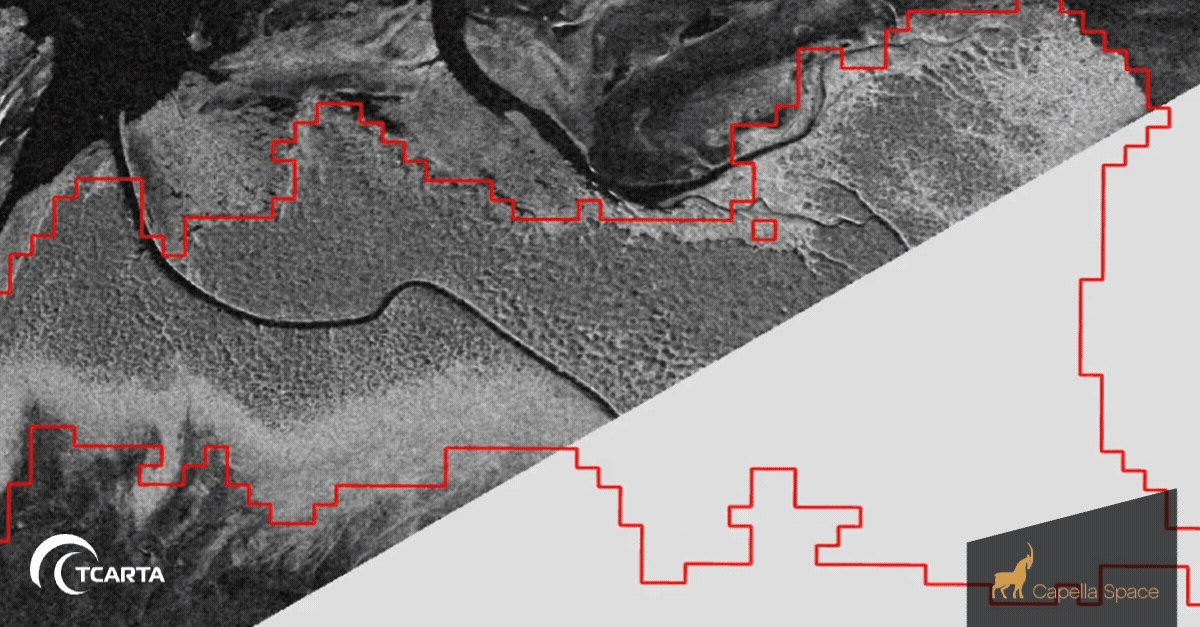The Blue Ecosystems and Their Importance
In the quest to combat climate change, monitoring carbon storage across diverse ecosystems is critical. While forests are often in the spotlight for their role in carbon sequestration, lesser-known ecosystems like wetlands, mangrove forests, and seagrass beds are emerging as crucial players in the fight against climate change. These ecosystems sequester carbon dioxide from the atmosphere and store it in their biomass and sediments, making them highly effective carbon sinks offering a nature-based solution in carbon sequestration. Despite their importance, coastal ecosystems are increasingly threatened by human activities, including coastal development, pollution, and climate change. Fast, replicable, and verifiable methods of monitoring these dynamic ecosystems continue to be a significant challenge globally.


Capella SAR Technology: Transforming Monitoring Capabilities:
Capella Space, a leader in harnessing the power of Synthetic Aperture Radar (SAR) technology to revolutionize Earth observation, is transforming the possibilities for monitoring mangrove environments with unprecedented detail and frequency. With Capella’s constellation of small yet agile satellites equipped with SAR sensors, mangroves can be monitored night and day, at an unprecedented spatial resolution. Equipped with Capella SAR, TCarta is uniquely positioned to track changes in mangrove environments at sub-meter resolution.


With Capella SAR, TCarta can provide:
– All-Weather Monitoring: SAR can penetrate clouds and operate day or night, providing continuous monitoring capabilities even in challenging weather conditions prevalent in tropical regions where mangroves thrive.
– High Spatial Resolution: Capella’s SAR satellites capture images with resolutions down to 50 centimeters, enabling detailed mapping of mangrove structure and extent. With the majority of global assessments and datasets regarding mangrove extent at or larger than 10 meters, TCarta offers a solution that is 20x the spatial resolution. This high resolution is crucial for accurately delineating new growth, changes in canopy dynamics, and monitoring changes in mangrove cover over time.
– Frequent Revisit Times: With multiple satellites in orbit, Capella provides frequent revisits to specific areas, allowing for near real-time monitoring of mangrove dynamics. This capability is essential for assessing seasonal changes, supplementing measurement, reporting, and verification (MRV) of blue carbon assets, and allowing clients a deeper understanding of current and potential blue carbon assets.


TCarta Innovation:
TCarta, in partnership with Capella Space, has developed a precise mangrove detection and monitoring technique using high-resolution SAR data. TCarta leverages SAR characteristics such as surface roughness, texture, and backscatter values, along with advanced processing and machine learning, to accurately map mangrove extent, monitor changes in their health and extent over time, and estimate carbon stocks in mangrove biomass and sediments. This approach supports habitat assessment, restoration efforts, and climate change mitigation strategies, allowing companies to perform their own due diligence when investing in mangrove-based carbon reduction assets.

